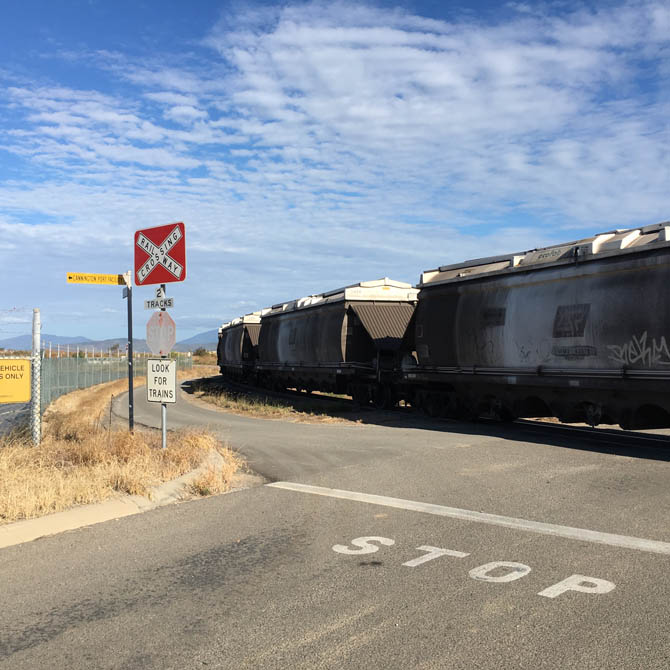-
Asia’s consumer revolution demands an appropriate-sized response. Amid variable conditions in Australia’s northern region, the right kind of response and development could see the area grow into a valuable business, trade and investment gateway to the rest of the country.
" Amid tough conditions in Australia’s northern region, the right kind of response and development could see the area grow into a valuable business, trade and investment gateway to the rest of the country."
Mark Hand, Managing Director, Corporate & Commercial Banking, ANZThe opportunities to open up and leverage Northern Australia are many and varied. The zone has major potential for growth in the form of irrigated agriculture and major food projects aided by construction of more dams, ports, road and towns.
The region north of Rockhampton, Geraldton and the Tropic of Capricorn contains 5 per cent of Australia’s population. It comprises 44 per cent of Australia’s land mass and receives 60 per cent of Australia’s rain – a vast untapped resource.
Although we have $A5.2 billion of agriculture production — mainly beef — coming from northern Australia, only 2 per cent of water is contained in dams. This presents an enormous opportunity for those with persistence, funding and vision.
The federal government has committed $A5 billion to the Northern Australia Infrastructure Fund. We should recognise, of course, that a mix of public and private sector funding are not the only planks needed for a vibrant regional Australian.
Like many communities outside the big capital cities, major centres like Townsville in Northern Australia are managing challenging conditions. The Asian opportunity offers a chance to forge a new and sustainable economic future as the northern region transitions from its traditional reliance on mining and resources.
{CF_IMAGE}
DOORSTEP
Australia is right on the doorstep of the booming middle class in Asia; something that plays to Australia’s food production credentials. The strength of Australia’s agriculture and food sector, underpinned by rural exports worth $A45 billion annually, will likely exceed $A100 billion in the next 15 years.
If the Chinese were to consume one more kilo of beef and one more kilo of lamb per capita, which is not out of the question, the market would need to supply an additional 6.5 million head of cattle and 65 million lambs – extraordinary!
The emergence too of south east Asia trading partners - like Indonesia – creates diverse and growing markets. By 2030, Indonesia will be the fifth largest economy in the world, yet trade with Indonesia remains extremely low.
With average beef consumption at 2kgs per head, compared with the OECD country average of 14kg – a quantum shift is undoubtedly on the way. Producers, processors, exporters – all those in the supply chain need to be ahead of the demand curve.
LIFE AFTER THE BOOM
The opportunity for the North extends well beyond resources and agriculture.
Australia has just reached a 25-year deal with the Singaporean Government that will see Singapore increase the number of troops it has on rotation in Australia from 6,000 to 14,000.
The Asian Development Bank estimated there is $US8 trillion worth of infrastructure projects in the region between 2010 and 2020. The opportunity for our intellectual capital – in the form of architects, engineers and project managers – is as strong as any commodity we currently export. And one that is underutilised.
The FTAs with key trading partners Japan, Korea and China open the door for many businesses and further illustrate the importance of Australia’s bi-lateral relations.
From a consumer perspective we’re now seeing people demand higher quality products and niche services, in everything from meat, wine, health and beauty services to technology and medical expertise and education.
{CF_IMAGE}
OPPORTUNITY NOW
In 2015 ANZ surveyed more than 1,000 Australian businesses to draw insights from those companies who have successfully grown and established their business in Asia.
We found that of businesses already in Asia, 48 per cent say that the revenue derived from their Asian operations was higher than their domestic revenue. Seventy six per cent who have expanded into Asia say that their profits have increased substantially.
Thirty eight per cent of small businesses who are doing business in Asia achieved a return on investment within 12 months. Close to 60 per cent of medium sized businesses and around 40 per cent of larger businesses accomplished this within 3 years.
Significantly, of the Australian businesses not already in Asia, 88 per cent said they’re considering expanding there within the next three years.
Across the board – big, medium and small Australian businesses across a variety of industries - have been successful in Asia. The bottom line is, if you are not already doing business in Asia then you should be thinking about it because clearly your competitors are.
Our research also highlights that many people, once they made the decision to do business in Asia, found the move less complex than they first thought.
There is no doubt that there are some challenges and risks facing businesses that are looking to expand into Asia. Ironically, not considering the opportunities may be even riskier.
Mark Hand is Managing Director, Corporate & Commercial Banking at ANZ
The views and opinions expressed in this communication are those of the author and may not necessarily state or reflect those of ANZ.
-
-
EDITOR'S PICKS
-
Growing, wealthier populations in China and Vietnam are demanding more and more agricultural imports but quality expectations and the strength of the competition is very high.
16 May 2016 -
The Australia-Singapore business relationship is about to take a major step forward. Because the relationship is so stable and the two countries so familiar with one another, it can be easy to take the value for granted.
6 May 2016 -
ANZ CEO Shayne Elliott has reiterated the bank's commitment to its Asian presence but says the lender will need to work harder to drive value from what it has built in the region.
17 March 2016


